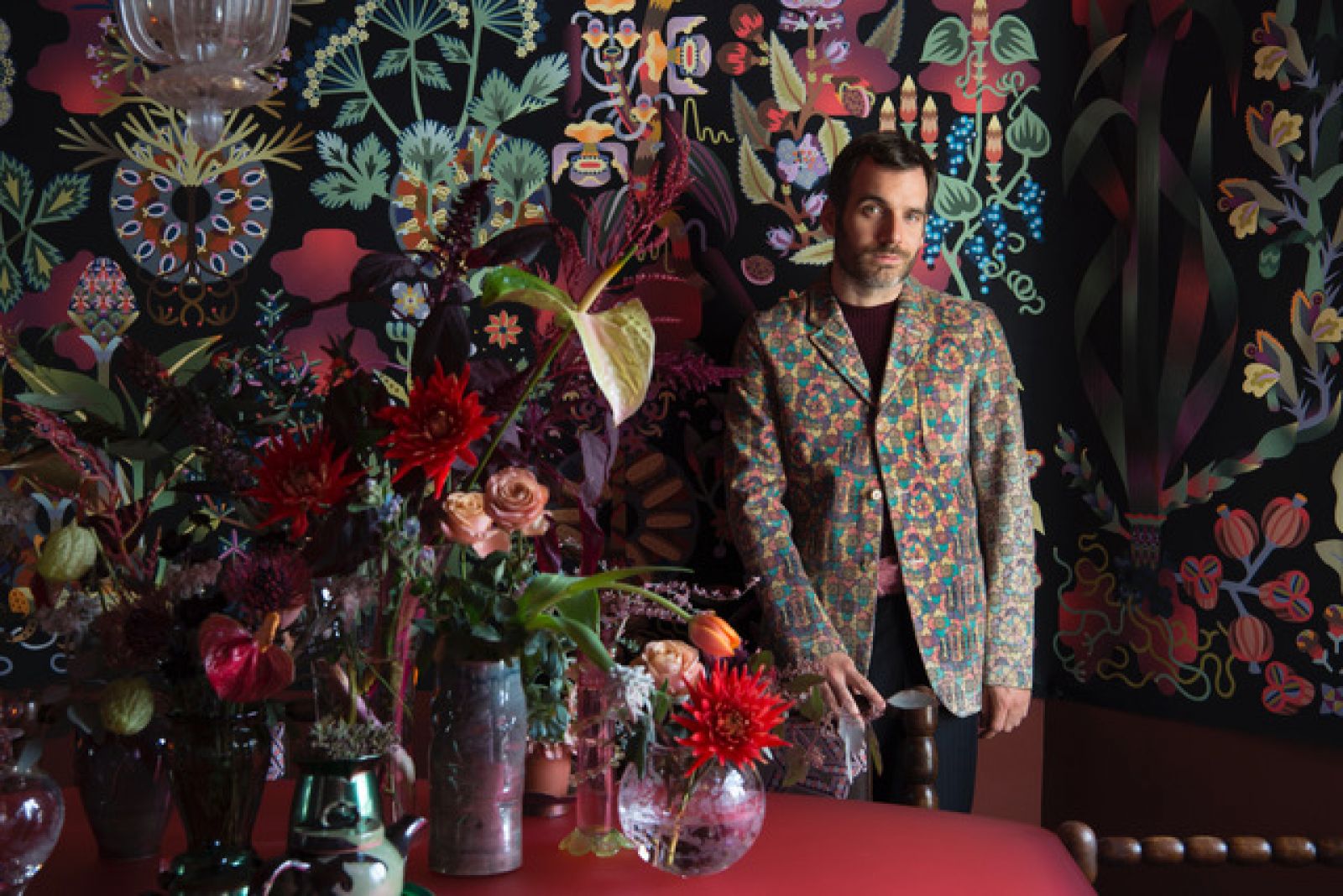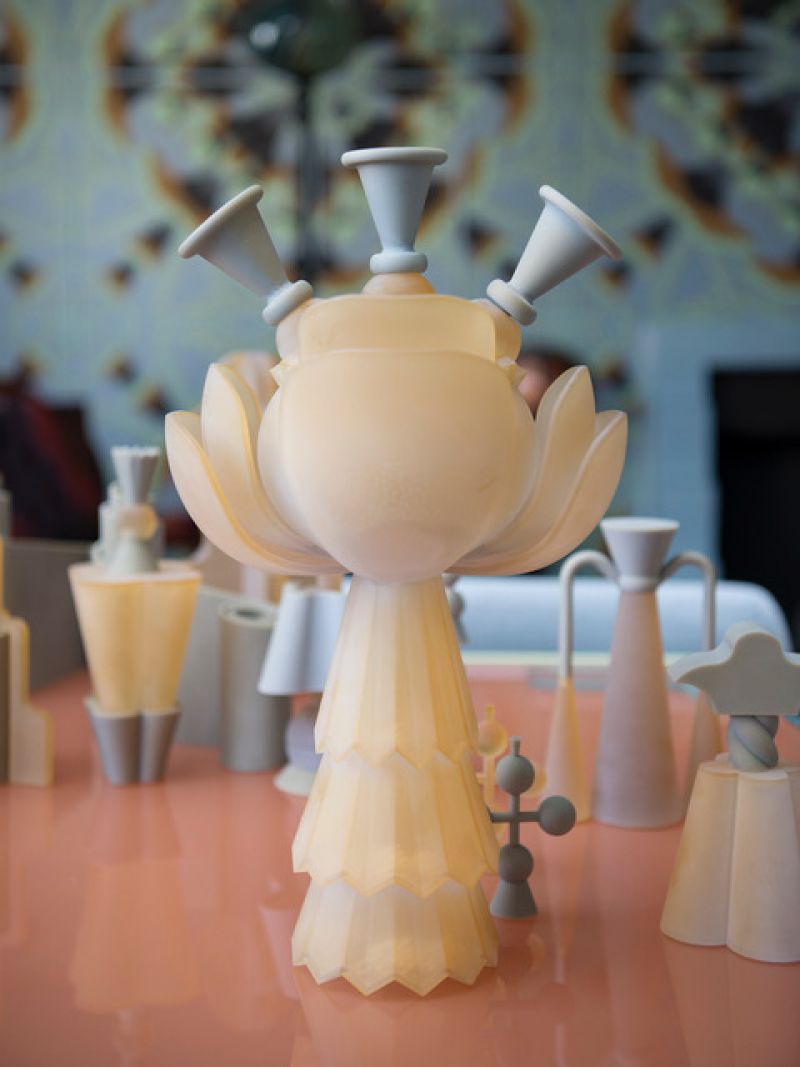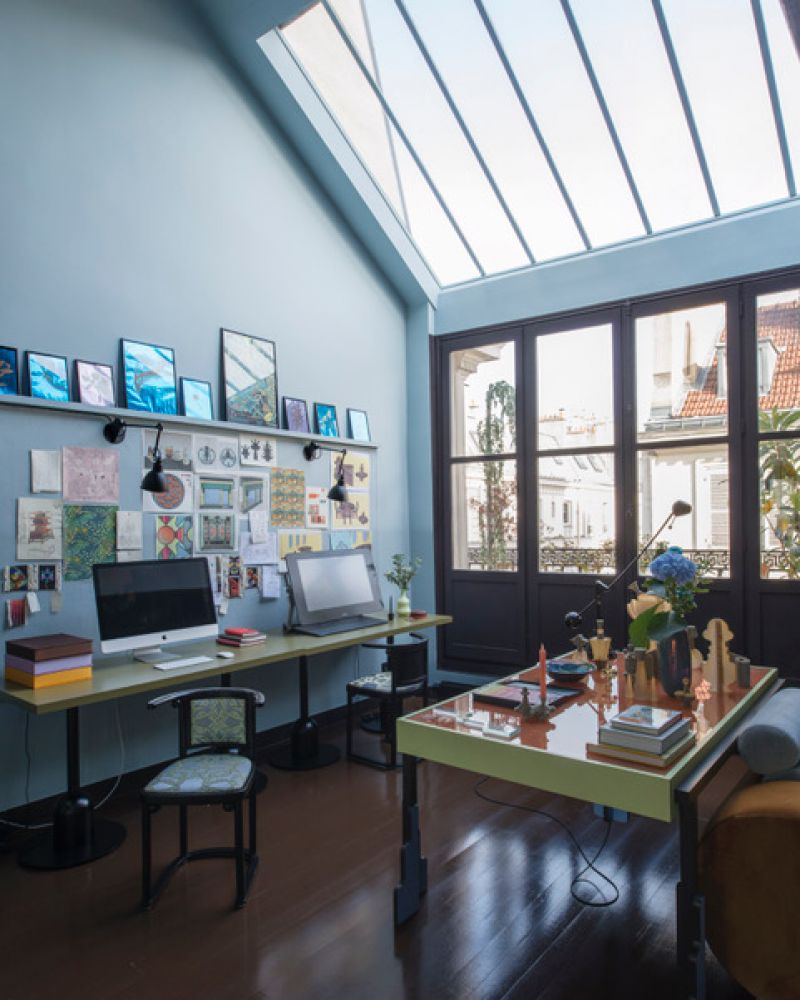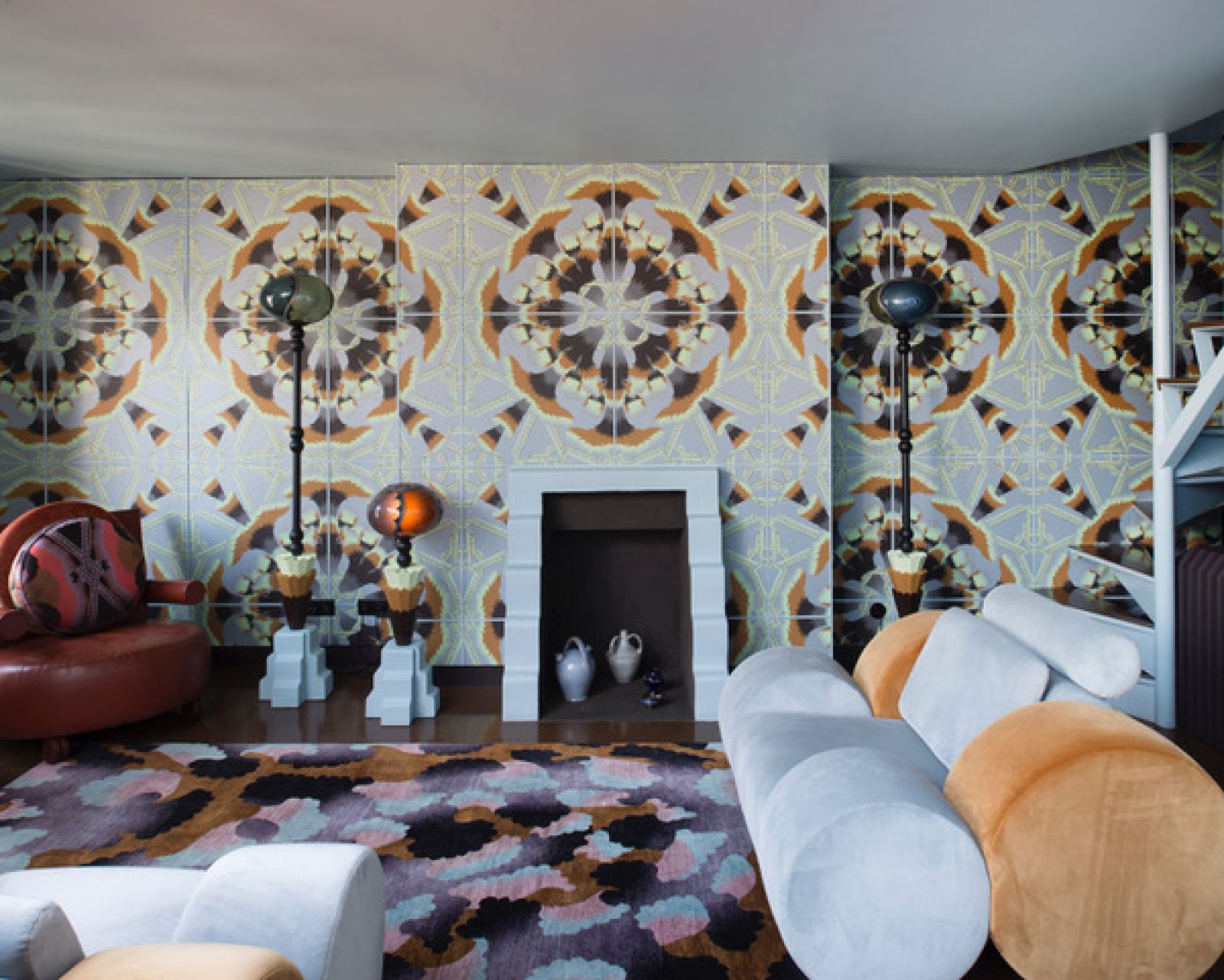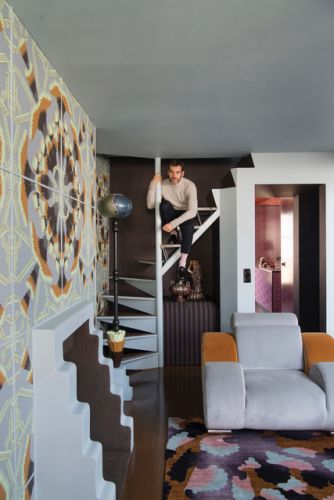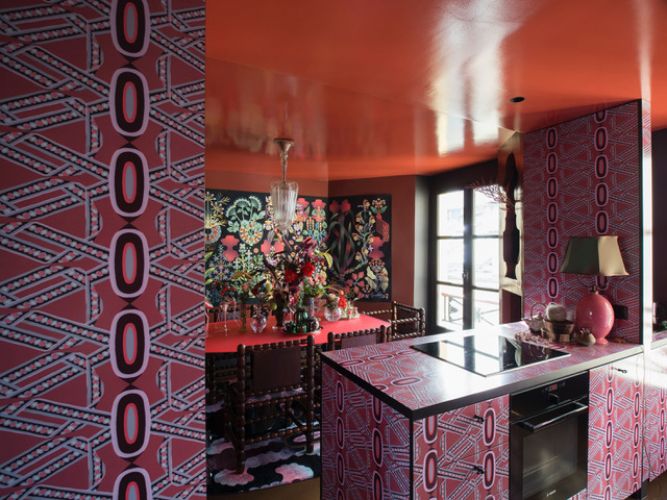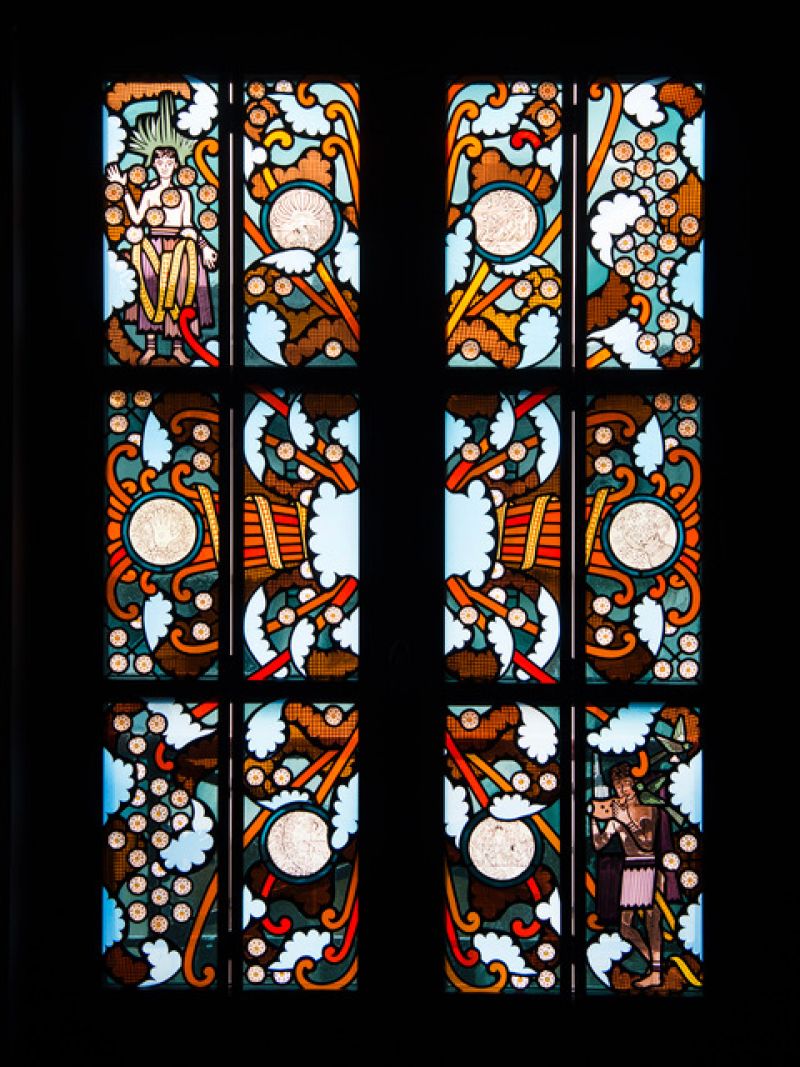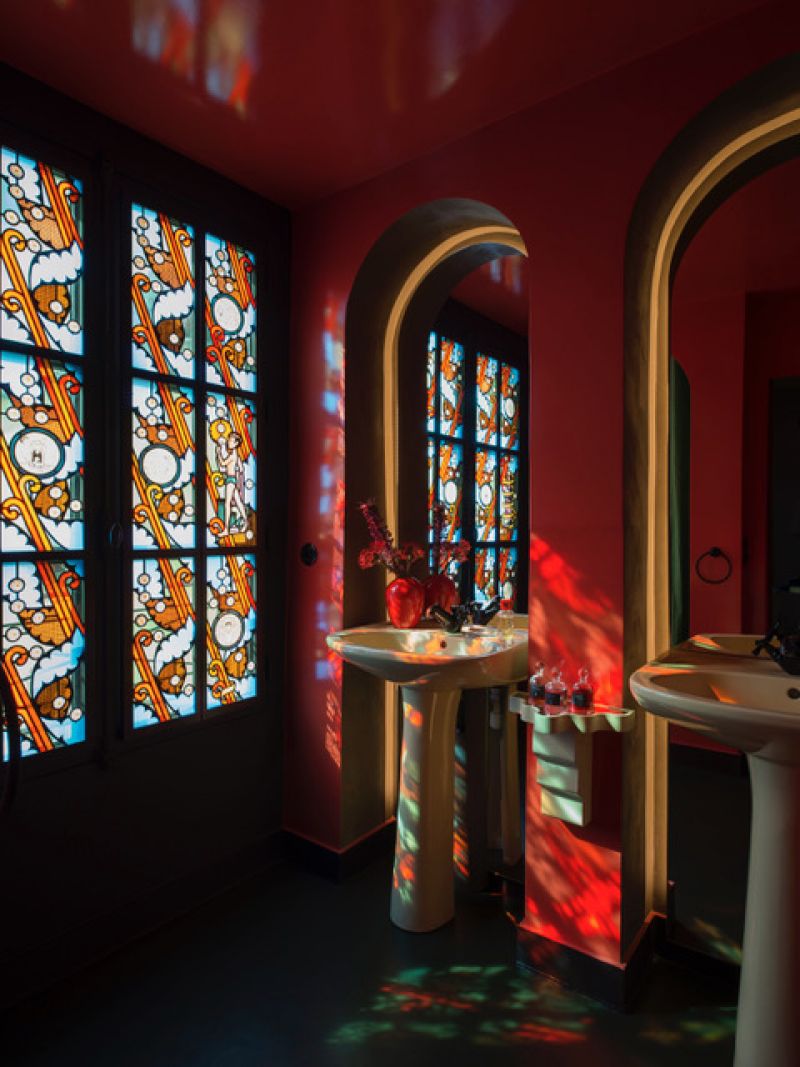Kitchen made of pink Formica with print. ‘You can easily make pasta for six people and the kitchen counter can be hidden from view.’ Pierre Marie’s maid is afraid to dust because she’s worried she’ll break the fragile cranes.
Pierre Marie Agin
French illustrator and graphic designer Pierre Marie Agin (35) comes from the fashion industry. He designed incredibly beautiful patterns for, among others, Hermès, Agnes B, but also for the brand Dyptique. He entered the world of interior design when he was asked to design a carpet for Italian carpet brand Nilugar in 2013. That carpet was the first step to a complete Pierre Marie interior for his roof apartment, which was sold three years ago. It’ll make minimalists run away screaming. The designer, on the other hand, thinks it’s calming.
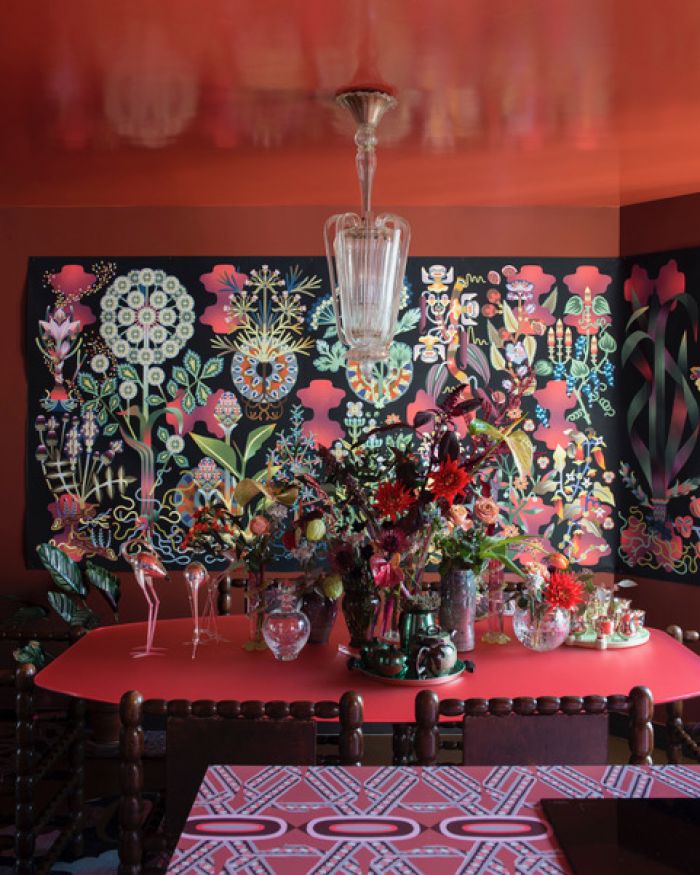
Domage,
a real visit to Pierre Marie Agin’s apartment isn’t in the books. He’s away from home for weeks on end, working at carpet producer Robert Four in a carpet factory in carpet city Aubusson. Skype is possible. A bigger interior difference than between his own house and the hotel room behind him is almost unfathomable. Laughing: ‘I think so too, I miss my home. It’s all greys and whites here.’ He himself looks very different from the bird of paradise in the opening picture. Together with the best embroiderers from the carpet factory, Pierre Marie is making a version in wool and silk. His first tapestry. ‘It’s because of the beautiful tapestries made in Aubusson during the 1940s, by artists Jean Lurcat and Jean Picart Le Doux. Ever since I saw those I dreamt of designing a tapestry. You can see various kinds of peppers, ginger and other spices in bloom. Except for the crocus, which yields saffron, almost no one knows what those flowers look like.’
The table is of his own design and luminous. ‘It’s practical when I want to trace drawings. And at night, when friends come over it’s cosy.’
The other important carpet is on the floor in his house. ‘In fact, the entire interior is derived from it. I designed it for Nilufar in 2013, even before I’d bought this apartment. I knew it’d go into the sitting room and the dining room. I also knew I wanted to try all the ideas about patterns and ornaments that I’d gotten while working on this carpet in the rest of the house.’ Nothing got in his way, for he didn’t have that much furniture anyway. ‘My last apartment was very small. There wasn’t any room for more. I didn’t want to buy new furniture. I Looked at contemporary design as something boring, very little colour, uniform shapes. I decided to design my own interior, guided by architect duo Lecoadic-Scotto
Carpet by Nilufar and chairs from an Italian auction. ‘Dirty red leather upholstery at first, it looked like it came from a German pornographic movie. But I liked the shape.’
Patterns
What he envisioned was a ‘complete work’, where everything connects to form a whole. ‘I wanted it to look like the lamps and furniture were growing from the carpet and walls.’ To get as close as possible to what he wanted, he worked with specialized craftsmen like those of studio Duchemin for stained glass and the upholsterers from fabric brand Créations Métaphore.
The lamp is a mix of traditional craftsmanship and high tech, that’s what the designer likes. The glass comes from a mould and the foot was 3D printed.
Kitchen made of pink Formica with print. ‘You can easily make pasta for six people and the kitchen counter can be hidden from view.’
Creating the patterns causes him to experience a euphoric state. ‘I read a piece by a scientist who claimed that repetition causes artists to become euphoric. They feel like they’re tripping. That’s true for me as well. I’m deathly afraid of real drugs by the way.’
Not only decorative museums like Villa Empain in Brussels, and the slightly creepy movies of Italian director Dario Argent, but also fairy tales are an inspiration to Pierre Marie. He decided to become an illustrator because of Paul Grimault’s film adaptation of Walt Disney’s Le roi et l’oiseau.
When the artist sits down in one of the large armchairs – one of the few pieces of furniture not designed by him – after a day of work, and looks at the walls, he calms down. ‘To me, looking at those patters is a form of meditation, they’re like a mantra or mandala. He actually doesn’t understand people that say it’s too chaotic. ‘It might look very chaotic and opulent, but it’s actually very calm and friendly. That’s no surprise really. I’d never be able to work in a chaotic place.’
Stained-glass window in the bathroom with the desert wind fairy tale on it. The sink is new but finished with special paint and looks vintage
The beautiful stained-glass windows in the bathroom with the little boy in it tell the story that his Algerian friend created for himself as a child to protect him from the Sirocco, the devastating desert wind. He’d scatter jasmine flowers around as some kind of magical defence against the red grains. I wanted to know if I was allowed to use it in my work because I was still looking for a story for the stained-glass windows and he really liked it. I put those windows in the bedroom and bathroom on purpose, those are the most intimate rooms in the house where protection is needed the most.’
This story was previously published in WOTH issue No 8 still available in our shop
